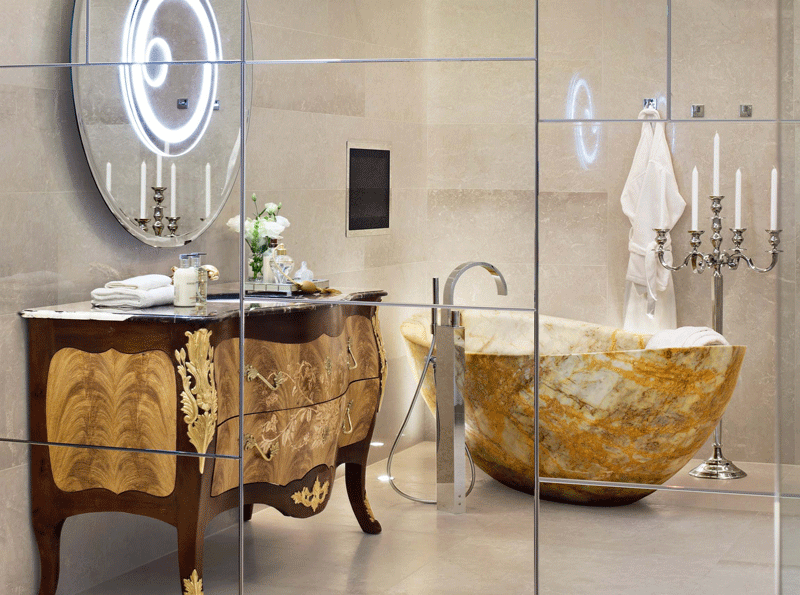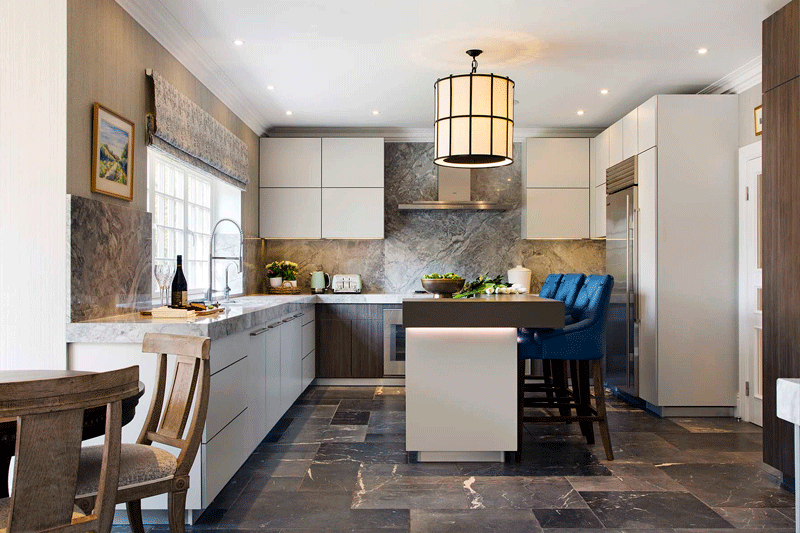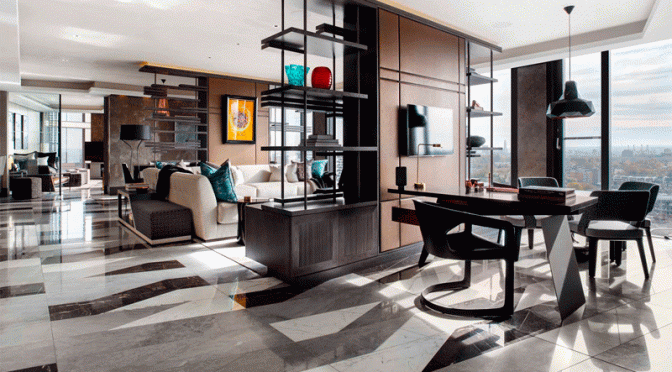There’s nothing quite like natural stone, particularly when it comes to tiling. Unlike ceramic, which is melded together to form a shape, stone is quarried out of the ground in one great slab. It’s something beautiful that Mother Nature has made, and reluctantly surrendered, then shaped into specific sizes.
Granite, marble, slate, travertine and limestone all fit into this category and have been used traditionally for thousands of years. Each has its own unique qualities (marble is renowned for its timeless beauty, granite for its hardness and slate for its durability), but unlike their composite ceramic cousins are more expensive.
The pedigree of floor tiles, stone boasts a high price tag and, befitting of its elevated status, can be temperamental. Stone is more difficult to lay and requires regular sealing, but its luxurious finish is often the choice of a high-end interior designer.
The main types of stone used for floor tiles include granite, a variety of igneous rock that is very dense and hard. Its distinctive appearance is due to the speckled minerals and its unique veining, which means it available in literally thousands of colours. Granite is nearly impervious and, once it is polished, resists scratching, which makes it an excellent choice for flooring in kitchens and high-traffic areas.

Then there’s marble, a type of metamorphic rock. Known for its rich veining, marble, like granite, is also available in a variety of colours. However, it’s more porous and is not recommended for kitchen flooring unless honed and then sealed on a regular basis.
Limestone is a type of sedimentary rock that offers an earthy appearance in both light and dark shades, but is less dense than granite and marble. The surface can be textured or polished smooth, but it can also be easily stained and is prone to scratching so it’s not ideal for high traffic areas.
Travertine is a type of limestone that offers an unusual crystallised appearance with an earthy tone. It is a soft, porous stone with a natural surface that has pitting or divots, but a honed or polished surface can be achieved after filling the surface voids. Unfortunately, it can be easily scratched and stained, which makes it a less popular choice for kitchens, but it can look beautiful. An experienced interior designer will know the best ways to utilise these various options.
Slate is a type of metamorphic rock that is extremely dense and very durable, and is available in darker earthy and grey tones. The surface of slate is naturally textured unless a smooth, honed finish is achieved. Slate is an excellent choice for kitchens and high-traffic area flooring such as in bathrooms.

Natural stone is typically given one of three types of finishes: natural, honed, or polished, and the finishing process begins once the stone is quarried and cut into a rough slab. Course abrasive pads, then less coarse and so on, are used until the final buffing, after which the tiles are cut to size by a stone fabricator.
To achieve the different types of finish, the finishing process is used to its full extent or stopped for an earthier look. The surface of stone with a natural finish for example is a dull appearance with texture and pitting being visible characteristics.
To achieve a honed surface, the finishing process is stopped just before buffing, which gives the stone its sheen, but not a full-on polish. This smooth, yet matt appearance is excellent for high-traffic and wet areas to prevent slipping and wear, so is perfect for bathrooms. Meanwhile, polished surfaces are highly reflective with a stunning mirror-like finish, making them virtually non-porous as well as beautiful.
There’s nothing quite like natural stone, either used in a home or indeed as a metaphor for the way live in general. As novelist Samuel Butler said: “Life is a quarry, out of which we are to mould and chisel and complete a character.”
